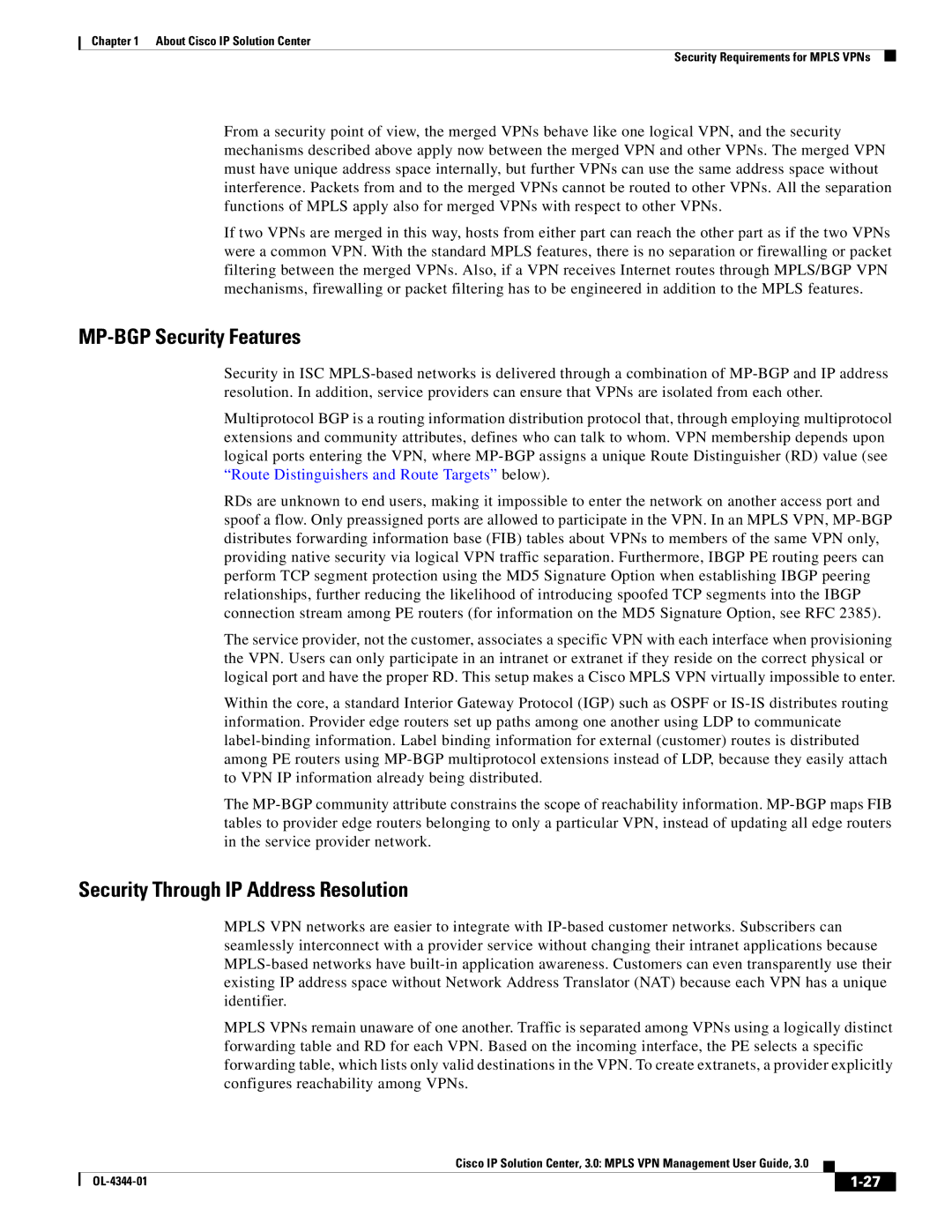
Chapter 1 About Cisco IP Solution Center
Security Requirements for MPLS VPNs
From a security point of view, the merged VPNs behave like one logical VPN, and the security mechanisms described above apply now between the merged VPN and other VPNs. The merged VPN must have unique address space internally, but further VPNs can use the same address space without interference. Packets from and to the merged VPNs cannot be routed to other VPNs. All the separation functions of MPLS apply also for merged VPNs with respect to other VPNs.
If two VPNs are merged in this way, hosts from either part can reach the other part as if the two VPNs were a common VPN. With the standard MPLS features, there is no separation or firewalling or packet filtering between the merged VPNs. Also, if a VPN receives Internet routes through MPLS/BGP VPN mechanisms, firewalling or packet filtering has to be engineered in addition to the MPLS features.
MP-BGP Security Features
Security in ISC
Multiprotocol BGP is a routing information distribution protocol that, through employing multiprotocol extensions and community attributes, defines who can talk to whom. VPN membership depends upon logical ports entering the VPN, where
RDs are unknown to end users, making it impossible to enter the network on another access port and spoof a flow. Only preassigned ports are allowed to participate in the VPN. In an MPLS VPN,
The service provider, not the customer, associates a specific VPN with each interface when provisioning the VPN. Users can only participate in an intranet or extranet if they reside on the correct physical or logical port and have the proper RD. This setup makes a Cisco MPLS VPN virtually impossible to enter.
Within the core, a standard Interior Gateway Protocol (IGP) such as OSPF or
The
Security Through IP Address Resolution
MPLS VPN networks are easier to integrate with
MPLS VPNs remain unaware of one another. Traffic is separated among VPNs using a logically distinct forwarding table and RD for each VPN. Based on the incoming interface, the PE selects a specific forwarding table, which lists only valid destinations in the VPN. To create extranets, a provider explicitly configures reachability among VPNs.
Cisco IP Solution Center, 3.0: MPLS VPN Management User Guide, 3.0
|
| ||
|
|
